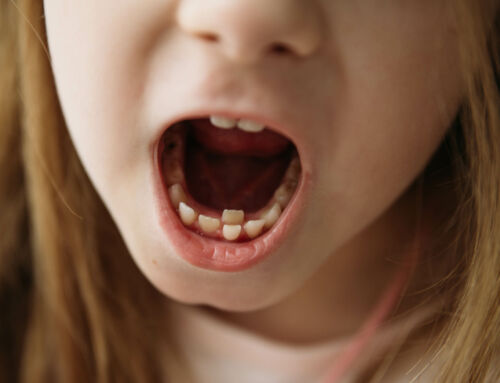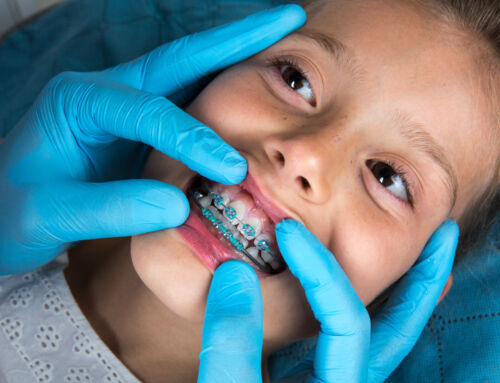Teeth alignment is influenced by a combination of genetics and environmental factors. While lifestyle habits and early childhood behaviors play a significant role in how teeth and jaws develop, genetics also play an important role in determining the size, shape, and structure of teeth and jaws. Understanding how genetics impact teeth alignment can give insight into why certain alignment issues arise and how they may be addressed.
How Genetics Influence Teeth Alignment
Teeth alignment is shaped by a mix of genetic and environmental factors, but genetics play a significant foundational role. The size, shape, and position of teeth and jaws are largely inherited, and these genetic traits impact whether teeth align properly or develop issues like crowding, gaps, and bite misalignments. Here’s a look at the main ways genetics influence teeth alignment.
Jaw Size and Structure
Jaw size, which is determined genetically, is one of the most important factors in teeth alignment. If a child inherits a smaller jaw from one parent but larger teeth from the other, crowding is likely to occur because there isn’t enough room for the teeth to line up evenly. Conversely, if a child inherits a larger jaw and smaller teeth, gaps or spacing issues may develop. The shape of the jaw also matters, as some children inherit narrower jaws that lead to crowding, while others inherit wider jaws that allow for more even spacing.
Tooth Size and Shape
Individual tooth size and shape are also influenced by genetics. Some people inherit larger, rectangular teeth, which take up more space in the mouth, while others may have smaller or more rounded teeth. For example, peg-shaped lateral incisors (smaller, pointed side teeth) can lead to gaps or spacing issues and may create asymmetry within the smile. Differences in the size and shape of teeth can impact the way they fit together, often causing them to overlap, rotate, or develop alignment issues.
Bite Patterns and Jaw Positioning
Genetics also affect how the upper and lower jaws are positioned, which in turn impacts bite alignment. When the upper jaw is more prominent than the lower jaw, an overbite can occur. Conversely, if the lower jaw is more prominent, this results in an underbite. Other bite misalignments, such as crossbites (where upper teeth bite inside the lower teeth) and open bites (where the front teeth don’t meet when the mouth is closed), can also be inherited. These bite patterns may not just affect teeth alignment but can also influence facial structure and balance.

Jaw Growth Patterns and Development
The growth patterns of the jaw are influenced by genetics, and how the jaw develops affects teeth alignment. For example, if one jaw grows faster than the other, it may lead to an overbite or underbite. In some cases, one side of the jaw may grow more than the other, leading to asymmetry. Additionally, the timing of jaw growth can play a role in alignment. If the upper or lower jaw growth completes earlier than the other, it may cause alignment issues as the permanent teeth come in.
Tooth Eruption Timing and Sequence
Genetics impact the timing and sequence of tooth eruption, which can also influence alignment. Children inherit patterns for when their baby teeth fall out and their permanent teeth come in. If teeth erupt too early or too late, or if they come in out of sequence, it can cause misalignment. For example, if a child loses a baby tooth too early, the neighboring teeth may drift into the open space, limiting room for the permanent tooth and potentially causing crowding or overlapping teeth.
Hereditary Alignment Issues: Crowding, Spacing, and Bite Problems
Certain alignment issues are more likely to be inherited. Common genetic alignment issues include:
- Crowding: When there isn’t enough space in the jaw for all teeth to align properly, crowding can occur, often due to smaller jaw size inherited from one or both parents.
- Spacing: Gaps between teeth, known as spacing, can happen if teeth are relatively small compared to the size of the jaw. Missing teeth, which can also be hereditary, may contribute to extra spacing.
- Overbite and Underbite: Jaw positioning plays a big role in these conditions. Children who inherit a larger upper jaw or smaller lower jaw may develop an overbite, while a more prominent lower jaw leads to an underbite.
- Crossbite and Open Bite: Crossbites and open bites can result from jaw positioning and growth patterns influenced by family traits.
Managing Genetic Alignment Issues with Early Intervention
Knowing that genetics play a role in alignment can be helpful in planning preventive orthodontic care. Pediatric orthodontic assessments are recommended by age 7 to catch alignment issues early. For example, palate expanders can be used to create additional space in a smaller jaw, and early treatment with devices like the Myobrace can help address alignment issues by encouraging proper jaw growth and correcting oral habits. These interventions can guide teeth and jaws into a healthier alignment before severe crowding or bite issues develop, often reducing the need for braces or other corrective treatments later on.
Common Alignment Issues with a Genetic Link
Some of the most common teeth and jaw alignment issues with a genetic component include:
- Crowding: Crowded teeth occur when there isn’t enough space in the jaw for all of the teeth to align properly. This is often seen in children with smaller jaw structures who have inherited larger teeth.
- Spacing: Gaps between teeth, known as spacing, can occur when teeth are too small for the size of the jaw. Spacing may also be influenced by missing teeth, which is sometimes a genetic trait.
- Overbite: An overbite is when the upper front teeth overlap the lower front teeth excessively. This alignment issue can be genetic, especially if the upper jaw is larger or grows more than the lower jaw.
- Underbite: In an underbite, the lower front teeth extend forward, creating a “bulldog” appearance. Underbites are often hereditary, especially when the lower jaw is more prominent due to genetics.
- Crossbite: A crossbite occurs when one or more upper teeth bite inside the lower teeth, rather than outside. This is typically due to jaw misalignment and may be inherited.
- Open Bite: An open bite is when the upper and lower front teeth do not touch when the mouth is closed, often caused by jaw growth patterns that leave gaps between the teeth. Although more commonly linked to habits like thumb sucking, open bites can also be inherited in some cases.
Epigenetics: How Environment Interacts with Genetics
It’s important to recognize that while genetics set the foundation for teeth alignment, environmental factors and habits can influence these genetic tendencies. Epigenetics, the study of how external factors affect gene expression, shows that habits such as thumb sucking, mouth breathing, diet, and oral posture can all impact how teeth and jaws develop—even if there’s a genetic predisposition to a particular alignment.
For example, a child genetically predisposed to an overbite may exacerbate this condition if they develop mouth-breathing habits, as mouth breathing can impact jaw growth and encourage an overbite. Additionally, a child predisposed to crowding can benefit from preventive orthodontic interventions, like palate expanders, that help create space for proper alignment.
Addressing Genetic Alignment Issues with Early Intervention
Understanding that genetics play a role in teeth alignment underscores the importance of early assessment. Pediatric dentists and orthodontists recommend that children have an orthodontic evaluation by age 7, as early intervention can be beneficial for addressing alignment issues that may worsen with growth. Some preventive orthodontic approaches include:
- Palate Expanders: For children with genetically narrow jaws, palate expanders can help widen the upper arch, creating more space for permanent teeth to come in straight.
- Myobrace and Myofunctional Therapy: These treatments can address improper oral habits that may worsen genetic alignment issues. Myobrace focuses on guiding natural growth by encouraging proper oral posture and breathing habits, while myofunctional therapy targets muscles in the mouth and face to support correct development.
- Traditional Orthodontics: Braces or aligners are common options to correct genetic alignment issues in both children and adults. Traditional braces are effective for a wide range of issues, including crowded teeth, overbites, and underbites.
- Jaw Surgery: In severe cases of jaw misalignment, orthognathic surgery may be recommended to realign the jaw. This is typically a last-resort option for adults who have significant functional or aesthetic concerns due to inherited jaw discrepancies.
Get Orthodontic Treatment for Misaligned Teeth in Fort Worth
While genetics certainly influence teeth alignment and jaw structure, they are not the sole determining factors. With early assessment and intervention, many alignment issues can be managed or prevented. By recognizing the genetic components of alignment issues, families and orthodontists can work together to create a healthy, beautiful smile that supports both function and aesthetics.
At Ahava Orthodontics, we believe in personalized treatment approaches that consider each child’s unique genetic and environmental factors. If you have concerns about your child’s teeth alignment or jaw development, contact us to schedule a consultation and learn how we can support a healthy, naturally aligned smile.




